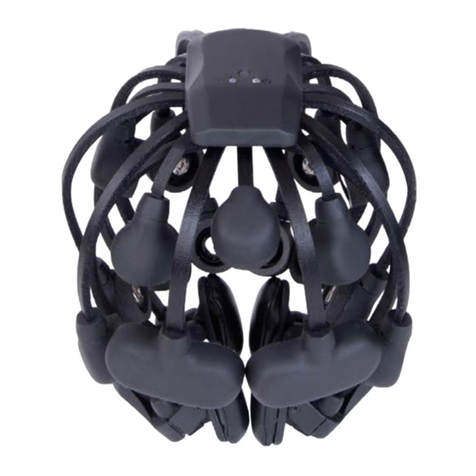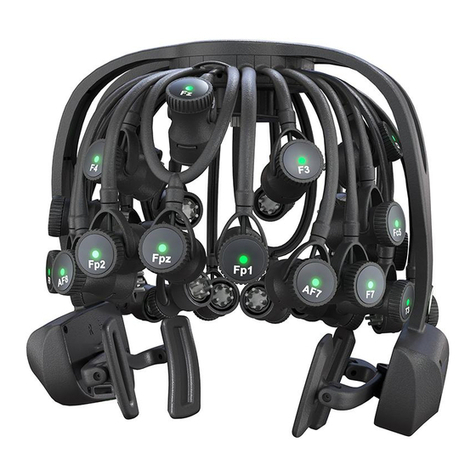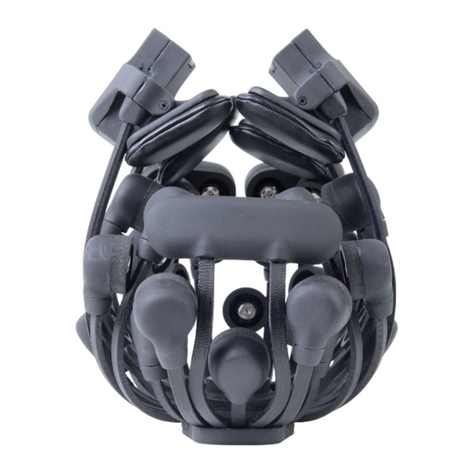
CHAPTER 1
About the Manual
Congratulations on the purchase of your new Cognionics Quick Series Dry EEG
Headset. This manual is organized as a detailed step-by-step guide on setting up
and using the device. Please read through the entire manual first to familiarize
yourself with the operation of your headset before proceeding with your first
recording.
1.1 The Quick-20 and the Quick-30
This documentation is written for both the Quick-20 and the Quick-30, as they
share many characteristics. Both have the same fundamental 10/20 channel
layout, though the Quick-30 has 10 additional channels in addition to the
standard 10/20 channels. The Quick-20 contains two grounds in the outer
sensors of the two dual-pods in the front, while the Quick-30 contains one
ground, which is located in the center of the triple pod in the front. The
Quick-30 also has two dual pods in the back of the headset. Regardless of
which headset you’ve received, this documentation serves as a guide to help
you set up and use your headset. In addition, our wiki contains resources to
help you get started with your Quick-20 or Quick-30 headset. It is located at
http://www.cognionics.com/wiki/.
Note: The Quick-20 and Quick-30 are for investigational use only. They
are not FDA-approved medical devices.
3






























